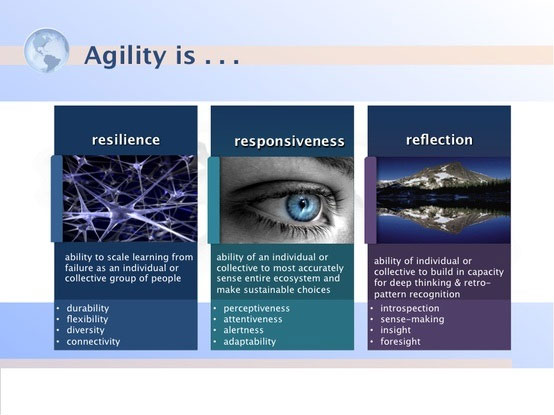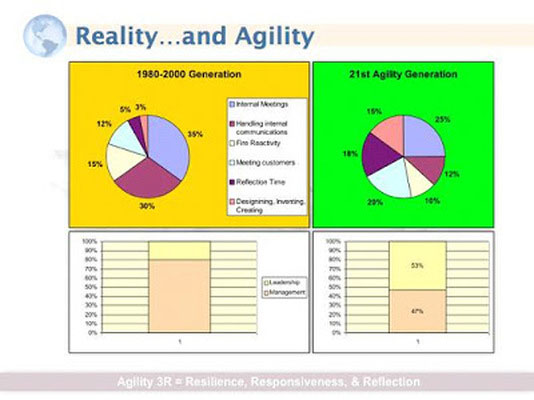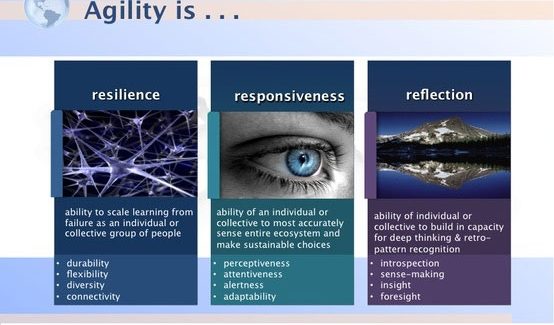“Reflection” in a vacuum can be dangerous. I’d like to frame this question in a bigger context. What does your organization need in order to see and interpret all the macro shifts while ensuring that choices that are made at tactical level are made with the highest level intelligence possible? The bridge between strategy and execution is one that most organizations desire more than anything to build. I don’t have a silver bullet for you or your business. I have a belief system that I hope can pivot you, your actions, your thinking, and ultimately your strategy.
The belief system that I have is that your personal competitive advantage is the way scan your environment, interpret that environment, and ultimately make decisions.
All of our choices are made at the micro-level by our sensory perception and our interpretation of that information. If you want to have a more accurate read on the macro – getting feedback, challenging your mental models and strengthening of a few core mental muscles is required. The mental muscles I advocate that you strengthen both personally and organizationally are resilience, responsiveness and reflection.

Familiarity Can Be Dangerous http://www.huffingtonpost.com/jennifer-sertl/familiarity-can-be-danger_b_3272430.html?ncid=engmodushpmg00000004 explains the genesis of this model.
As I zoom in on “reflection” by design – I think of your ability to build capacity for deep-thinking and pattern-recognition as vital. The core competencies of which I name introspection, sense-making, insight, and foresight. No one would disagree that in the age of insight & information these are all vital. Yet, when I look at people’s learning plans, personal capacity designs and P & L statements – I rarely see it included. Our true values are seen in where we spend our time and money. Many are saying they value reflection, but when it comes to the proof ….?
We all know about the P & L of business performance. As an executive coach a while back, I took a sample group of leaders through an exercise where all meetings & scheduled appointments were put into a framework. On the left hand side you can see that most of the time and energy was put into fire fighting or running the business- very tactically. I don’t think these calendars are better or worse than most. I feel this is a fair sampling of typical business today. My question is, how will one create innovation and new solutions if there is no strategic time allowed in which to consider how to take the customer/vendor feedback which is now synchronous into account? Strategy is not learning time. It is time to reflect, to think, time to organize- what is already there. That for me is what reflection is. Open space for open space. Not many businesses are designing for the theory of constraints so businesses are often making promises they have no internal capacity to fulfill. (I just want to interject how much I miss Eliyahu Goldratt https://en.wikipedia.org/wiki/Eliyahu_M._Goldratt).

Cross-training and cross-projecting have a purpose and it needs to support the process of gaining multiple perspectives. However, without time to consider the patterns and build scenarios, the potential learning may not occur. Exposure does not ensure integration. As you can see from the graph on the right side, I believe that in order to have innovation to occur, you need to have down time. After all, an idea needs stillness to land. You have to have capacity to put all that great customer/vendor feedback into meaningful solutions. Then, there is the topic of brand management and ecosystem engagement which is a conversation on its own.
If you think you are adding value by multi-tasking and by being sleep deprived, I’d like you to reconsider.
There are many ways to practice “open space” and “reflection” in your life and in your business. It is urgent in a time where the macro is moving so fast that you need designed time for reflection. You need to hear your own thoughts and find your center to make wise, intelligent decisions.
In pursuit of reflection by design,
Jennifer

